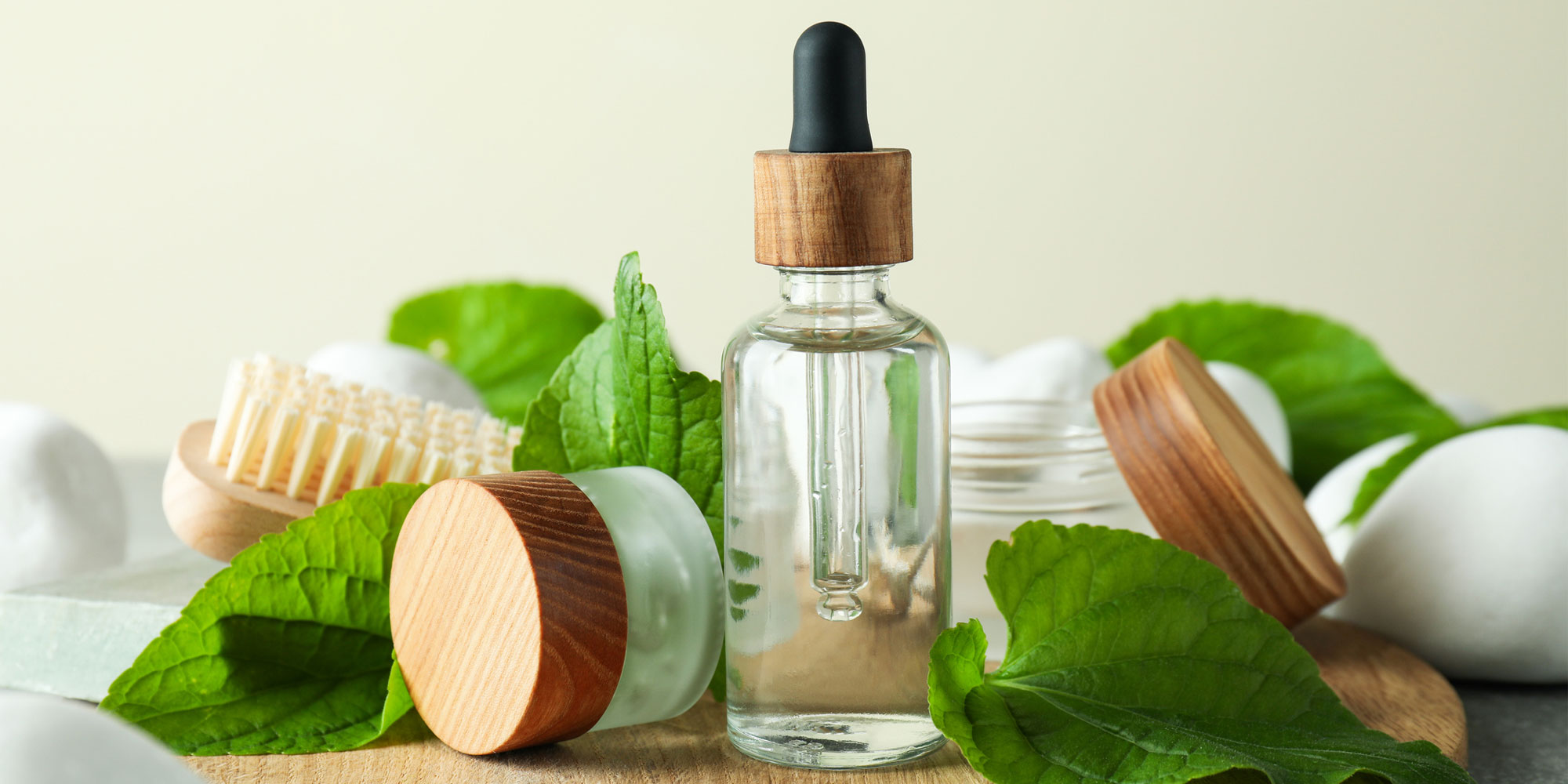Ethyl Acetate in the Cosmetics Industry
By Jillian Jastrzembski
Introduction
Ethyl acetate is a common and versatile solvent which finds its way into many cosmetic applications – either as a direct ingredient, or as part of the production process. It a colorless, mostly non-toxic, “green” solvent found abundantly in nature. Read on to learn more about some of the main roles of ethyl acetate in the cosmetics industry.
As a flavor/aroma additive
If you don’t recognize ethyl acetate by its name, perhaps you know it by its smell: solventy-sweet, fruity, and wine-like. Like other fruity esters, it may be used as a flavor/aroma additive in cosmetics, perfumes, and foodstuffs.
Ethyl acetate is naturally found in some fruits and produced during the fermentation of alcoholic beverages. Therefore, it contributes to the characteristic aroma of wine, brandy, and especially traditional Chinese liquor. In excessive quantities it is considered a wine fault.
In nail polish and nail polish removal aids
The scent of ethyl acetate, particularly in higher concentrations, likely triggers a strong association with nail polish and nail polish removal aids.
The various ingredients used for nail polish, which include film-forming agents, colors, resins, and plasticizers, are combined and dissolved in a solvent. Solvents like ethyl acetate, or sometimes butyl acetate, are often used for this purpose, as they will dissolve following application, leaving behind the colored varnish. That’s why if your bottle of nail polish has gone dry and cakey, you can add just a bit of ethyl acetate (or nail polish remover) to restore the liquidity.
Although acetone is the most common base for nail polish removal aids, there is a large market for acetone-free removers. Acetone is harsh on skin and nails and may cause irritant contact dermatitis. Ethyl acetate, mixed with isopropyl alcohol, often makes for a gentler alternative to acetone that won’t leave nails dry and brittle with chronic use.
As an antimicrobial agent
Ethyl acetate is an effective antimicrobial agent at about 5% – similar to butyl acetate. Hence, nail polishes and nail polish removers are considered low risk for microbial growth.
In spray-on fabric
Perhaps you’ve caught wind of this recent fashion gimmick: spray-on clothing. This “fabric” can literally be sprayed on a human body and create an instant, form-fitting piece of clothing without any sewing.
These spray-on materials are created using a fiber, a binder, and a diluent. The diluent is something that evaporates quickly, leaving behind the fiber as a non-woven fabric. If the fabric is intended to be easily removable from the surface (the human body), ethyl acetate makes a good choice. Adhesive like epoxy can be added if the fabric is intended to stick.
As an extraction solvent
One indirect way that ethyl acetate contributes to your cosmetic products is as an extraction solvent for plants. Many plants contain compounds that possess powerful biological properties – often highly desirable in skincare products. Ethyl acetate can be used to extract the active compounds from the plants in order to formulate cosmetics.
For example, a common skin concern is overproduction of melanin, leading to uneven skin tone, dark spots, and hyperpigmentation. A 2022 review found that the ethyl acetate extract of Oryza sativa Indica was effective to inhibit melanin production in skin. In fact, ethyl acetate was the only successful solvent for this purpose in human trials.
Another common skin concern is damage from sun exposure. In a 2023 study, the ethyl acetate fraction of Padina boergesenii brown seaweed could be used in sunscreen creams to inhibit cell damage caused by UVB irradiation.
Hence, the use of ethyl acetate as a extraction solvent for plant compounds opens up a whole world of additional cosmetic applications.
Health considerations
The use of ethyl acetate in nail polish/nail polish remover and in spray-on fabric may result in something called irritant contact dermatitis. This a reaction of the skin due to damage to the outermost layer. As mentioned in the previous section, ethyl acetate has a lower risk of dermatitis compared to harsher solvents like acetone. However, it could still cause an issue either in sensitive subjects or with chronic exposure.
There are also respiratory risks associated with chronic or high exposure. These are especially concerning for people like nail artists, who work regularly in the presence of ethyl acetate solvent. Spray-on fabric can also pose respiratory risks, since the material is aerosolized.
Conclusion
Ethyl acetate is found all over the cosmetics industry. It solubilizes other ingredients easily and evaporates quickly. It may also impart a fruit or wine-like aroma, and inhibit microbial activity. In some cases, like nail polish and nail polish removers, it may be the first ingredient on the label. In other cases, its role is less obvious, like when it’s used as a solvent to extract bioactive compounds from plants. Although caution should still be taken with sensitive skin and chronic exposure, ethyl acetate has relatively low risk of irritation and is generally preferred to harsher solvents like acetone.
References
Chandra, Somodyuti & Das, Anupam. “The science of nail polish, nail polish remover, and nail moisturizers: A Comprehensive Approach.” (2019) 10.1201/9781351139724-35.
Feng, Danni et al. “The melanin inhibitory effect of plants and phytochemicals: A systematic review.” Phytomedicine : international journal of phytotherapy and phytopharmacology vol. 107 (2022): 154449. doi:10.1016/j.phymed.2022.154449
Heaton, Tasha et al. “Laboratory Estimation of Occupational Exposures to Volatile Organic Compounds During Nail Polish Application.” Workplace health & safety vol. 67,6 (2019): 288-293. doi:10.1177/2165079918821701
Lens, C et al. “Antimicrobial activity of Butyl acetate, Ethyl acetate and Isopropyl alcohol on undesirable microorganisms in cosmetic products.” International journal of cosmetic science vol. 38,5 (2016): 476-80. doi:10.1111/ics.12314
Rao, M., Pollock, S., Murase, J.E. et al. Allergic to Fashion. Dermatol Ther (Heidelb) 13, 1–5 (2023). https://doi.org/10.1007/s13555-022-00847-2
Soleimani, Soolmaz, et al. “Potential of the Ethyl Acetate Fraction of Padina Boergesenii as a Natural UV Filter in Sunscreen Cream Formulation.” Life, vol. 13, no. 1, Jan. 2023, p. 239. Crossref, https://doi.org/10.3390/life13010239.
< Back


